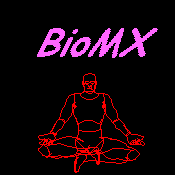Biomechanics (BM) were developed by Meyerhold in the twenties to train actors in physical theatre. BM have a long tradition, notably of the Commedia Del'Arte, with the emphasis on stage movement, not the text.
Usually I teach BM after an initial introduction to the Method Acting, and therefore the book is more suitable for Intermediate and Advanced actors.
There are several good books on Meyerhold published in the last 25 years, but none of them intended for the classroom use. "Biomechanics Theory for Actors" is based on the classes in acting I teach since 1986. I use the ideas of Meyerhold to give the students an alternative to Method theory in acting, especially when it comes to doing comedy.
There are three main parts in the textbook:
"Actor's Text" and "Acting Cycles" is dealing with the single actor and understanding the micro-acting. "Actor's Text" is the design for the performance (role) that any actor has to develope based on his or ner monologue (character). "Acting Cycle" is the smallest segment of the physical action with 4 steps and the Actor's Text is a combination of the Acting Cycles.
As usual, we have to start with the script analysis, i.e. understanding the dramatic structure of the monologue or scene. The script breakdown asks for defined elements of composition (exposition, climax, resolution) and physical expression of the characterization (visualization and physicalization).
In order for actor to execute those tasks, we have to learn the body and space bereakdown -- how to separate the the body parts, which will do the acting and the acting areas on stage, assigned for specific emotions.
Part II -- Actors' Chronotope; creating the subjective time and space of the role. The spectator through identification with the character enters this chonotope to experience the stage event. Here we move from creating the stage sentences to the full Actor's Text and arranging mise-en-scene, the four dimensional field where the public reads the stage statements.
To transform the objective time-space into the character's chronotope we have to understand the nature of the stage event. The Event Intensity, Density, Depth, Energy and Duration are controlled by the directions of the motion vectors and axises. Motivation, Objective and Obstacle, known in Method Acting, have to be translated into physical action in space and time. Actor's choice must be visible. For example, the Character's Addresses have to have index and motion vectors, establlished by the actor visually.
The last two parts (4 & 5) are the apparatus with the appendix, the glossary, exercises and etudes, bibliography and tests. There are several pages-chapters on traditions and applications of BM: Mikado & Kabuki, Dada, Shakespeare and Moliere, but the last part is the showcase studies of The 12th Night with the production notes, archives, discussions and so on.
[ theory ]













 2009 LUL
BioMX Acting :
2009 LUL
BioMX Acting :
 & thr blog
& thr blog
